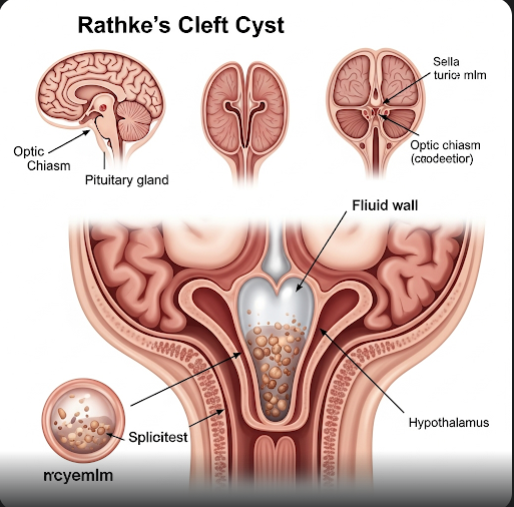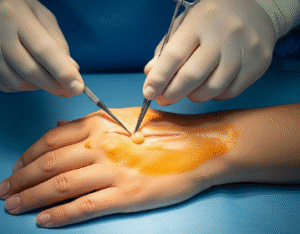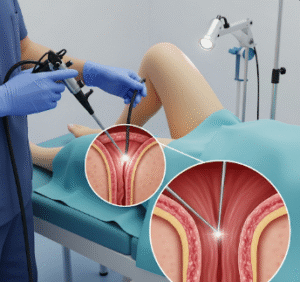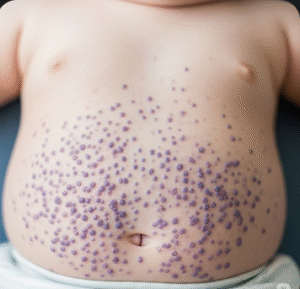Overview
Rathke’s cleft cyst (RCC) is a benign, fluid-filled cyst that forms in the pituitary gland region, originating from remnants of Rathke’s pouch during embryonic development. Although usually asymptomatic, larger cysts can cause symptoms by compressing nearby structures such as the pituitary gland or optic nerves. In Korea, endocrinologists and neurosurgeons collaborate to diagnose and manage RCC with advanced imaging and tailored treatment options.
What is Rathke’s Cleft Cyst?
Rathke’s cleft cysts are non-cancerous cystic lesions found in the sellar or suprasellar region of the brain near the pituitary gland. They arise from epithelial remnants of Rathke’s pouch, a normal embryological structure. Most RCCs are incidental findings, but some may grow large enough to cause hormonal imbalances or visual disturbances.
Symptoms
- Headaches
- Visual disturbances such as blurred vision or loss of peripheral vision
- Hormonal imbalances leading to symptoms like fatigue, menstrual irregularities, or decreased libido
- Nausea or vomiting in severe cases
- Rarely, symptoms of pituitary dysfunction such as diabetes insipidus
Causes
Rathke’s cleft cysts develop from incomplete obliteration of Rathke’s pouch during fetal development, leading to cyst formation in the pituitary region.
Risk Factors
- No known genetic or lifestyle risk factors
- Most cases are sporadic and discovered incidentally
Complications
- Compression of the pituitary gland causing hypopituitarism
- Visual impairment due to optic nerve compression
- Rare cyst rupture leading to sudden headache or meningitis-like symptoms
Prevention
- No known prevention due to congenital origin
- Regular monitoring if diagnosed incidentally
Treatment Options in Korea
Diagnosis
MRI scans are the gold standard in Korean medical centers for detecting RCC, assessing size and impact on surrounding structures. Hormonal evaluations are done to check pituitary function.
Medical Treatments
- Observation and regular monitoring for small, asymptomatic cysts
- Hormonal replacement therapy if pituitary hormone deficiencies are present
Surgical or Advanced Therapies
- Transsphenoidal surgical drainage or removal for symptomatic or enlarging cysts
- Minimally invasive neurosurgery techniques widely used in Korea
Rehabilitation and Support
- Endocrinology follow-up for hormone management
- Visual rehabilitation if needed
- Psychological support for patients coping with chronic symptoms













